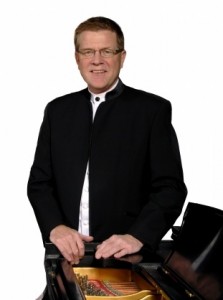UTAH WIND SYMPHONY, Larry Zalkind, trombone, Rose Wagner Center for the Performing Arts, Nov. 2
There’s a certain special energy that blossoms when a large group of talented musicians come together to play excellent musical compositions. The readers of Reichel Recommends are certainly familiar with this energy; the Utah Symphony has it on display each weekend of the concert season in Abravanel Hall. For many years the US|UO (Utah Symphony and Opera) was the only organization in town able to maintain a permanent professional large performing ensemble, but now there’s a new group that’s arrived on the scene: the Utah Wind Symphony.
Wednesday night the UWS, now in its second season as a professional organization, played its first concert in its new home, the Jeanné Wagner Theatre at the Rose Wagner Performing Arts Center. Kudos to the UWS organization for recognizing that there is a substantial demand in our community for a professional concert band. I’m happy to report that the hall was packed when the concert began.
Under the baton of music director Scott Hagen, the wind symphony presented an evening
of music that was varied in scope, dynamic range and historical context. The opening number, Gavorkna Fanfare by American composer Jack Stamp immediately put the group’s technical abilities on display in a dramatic fashion, proving that the musicians have been earning their pay with plenty of rehearsal. Lux Aurumque, by the well known choral and band composer Eric Whitacre, tested the group’s ability to maintain a focused ensemble sound amidst a lush orchestration and a slowly evolving soundscape. The group handled the new challenge well.
The concert then featured trombone soloist Larry Zalkind performing Streets of Paris by trombonist and composer Bill Reichenbach. Zalkind, the Utah Symphony’s principal trombonist, performed with the confidence and grace that he’s earned through 30 years of professional music making. The band supported him very nicely: never overbearing, they added the needed texture and color to the composition, while always allowing the soloist the fore.
Perhaps the weightiest piece of the evening was British composer Philip Sparke’s Sunrise at Angel’s Gate, a piece inspired by the composer’s visit to Grand Canyon National Park. Sparke is a composer at the top of his craft. The music was captivating, with a well thought out form, orchestration and trajectory while also offering a vivid sonic description of the majesty of that special place.
The final piece of the evening was chosen specifically for its historical significance. Serious music for large wind ensembles is a fairly new phenomenon in the context of music history, and Percy Grainger’s 1937 composition Lincolnshire Posy seems to have become established as a classic in the genre. It’s earned its place. The music often makes use of adventurous tonal harmonies and unusual rhythms to present six distinct sections, each with its own mood and texture. With Grainger, the wind symphony genre has a figure similar to Richard Wagner: musically brilliant but controversial in matters of race. Like Wagner, Grainger was a self declared anti-Semite and believer in the supremacy of the Aryan race. It’s interesting that, while it’s tough to admire these men’s personal beliefs, it seems to be remarkably easy to admire their music. Perhaps music brings out the best in people.
Hagen’s goal for the Utah Wind Symphony is to eventually join the ranks of the top cultural organizations in the state. In purely musical terms, the group has some work to do in order to rival the top notch performances we hear from the US|UO organization, but they’re closer than you might expect. While the playing wasn’t flawless, it was professional and polished. If the group manages its finances well and becomes able to pay its musicians a better wage, I see no reason why the Utah Wind Symphony couldn’t rise to the same performance standards found in the US|UO.
There may be other factors that come into play, though. The US|UO has the luxury of being able to draw from a long and incredibly rich history of music literature. Audiences tend to know these works well and are motivated to attend concerts that feature beloved works. The wind symphony genre, on the other hand, has few well known works other than the marches of John Philips Sousa. I do wonder if this will be a serious disadvantage. The good news is that music education programs in the United States tend to produce far more wind and percussion students than string students. I was glad to see many young faces in the audience; many more than I tend to see at the symphony or the opera. If the Utah Wind Symphony can continue to appeal to an audience both young and old, then we may indeed be witnessing the birth of a new cultural institution in Utah.

